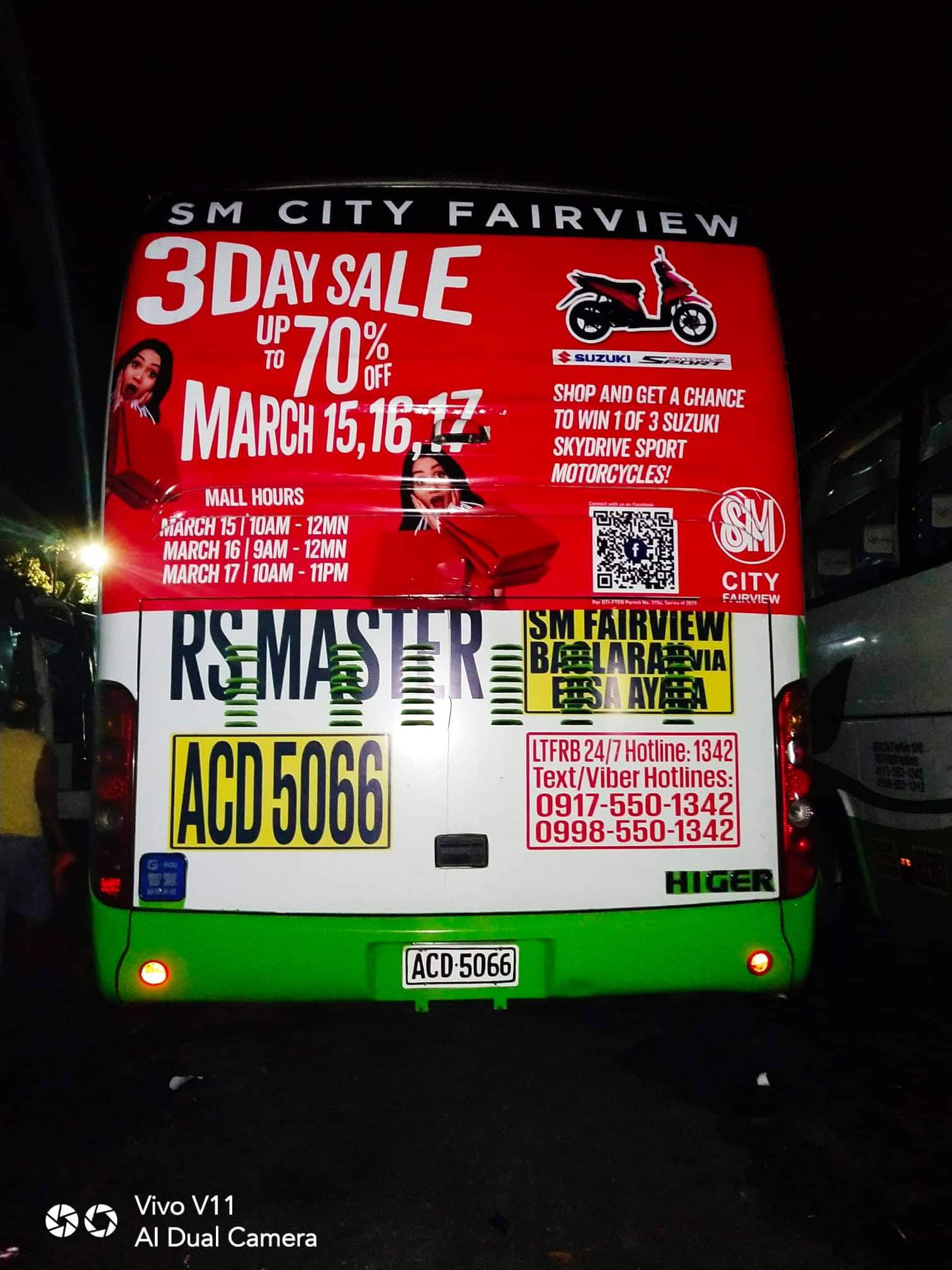Top Advantages of Transit Advertising Philippines for Businesses
Top Advantages of Transit Advertising Philippines for Businesses
Blog Article
Exactly How Transit Advertising Can Transform Mass Transit Spaces Into Dynamic Advertising And Marketing Operatings Systems
Transportation advertising and marketing holds considerable capacity to redefine public transportation rooms right into vivid marketing systems that involve and inform. As we discover the diverse advantages and progressing methods of transit advertising and marketing, it increases the concern of exactly how this improvement might redefine our interactions with both brand names and the city atmosphere.
Benefits of Transportation Marketing

Additionally, transportation marketing is highly cost-efficient contrasted to typical media. It permits marketers to attain high impressions at reduced prices, taking full advantage of roi. The captive audience of travelers gives a chance for brand names to communicate their messages to individuals who are usually responsive during their travel times.
Additionally, the vibrant nature of transportation marketing allows projects to be upgraded frequently, guaranteeing that messaging stays relevant and timely. This adaptability can be vital in reacting to market patterns or promotional events, maintaining the brand top-of-mind for consumers. Last but not least, the pervasive existence of transportation advertising adds to brand name recall; repeated direct exposure within familiar travel contexts reinforces brand awareness and fosters consumer loyalty, ultimately driving sales and boosting brand name credibility.
Kinds Of Transportation Advertising
Public transport systems supply different formats for advertising and marketing, each accommodating various advertising and marketing strategies and audience involvement techniques. One prominent kind is exterior bus and train covers, which cover the entire lorry and produce a mobile signboard effect, enabling high exposure in urban atmospheres. These covers can capture attention as they traverse busy streets, reaching a diverse target market.
One more prominent format is indoor advertising and marketing, that includes posters, electronic displays, and ads on transportation seats. These placements involve guests during their trip, strengthening brand name messaging in a restricted area. Digital displays, specifically, provide the benefit of dynamic content, allowing marketers to upgrade messages in real-time.
Terminal advertising is additionally significant, including posters, banners, and interactive stands within transportation terminals. These ads take advantage of foot traffic and can target specific demographics based on area.
Finally, promotional collaborations with transit authorities can cause one-of-a-kind projects, such as themed transportation experiences or events, boosting the general interaction with commuters. Each kind of transportation advertising supplies distinctive advantages, enabling brands to tailor their strategy to effectively reach their target market within the general public transportation environment.
Involving Commuters Effectively
Commuters are progressively inundated with advertising messages throughout their everyday trips, making it vital for brands to involve them in ingenious methods. To record attention in this jampacked room, marketers should prioritize creative thinking and importance. Making use of eye-catching visuals and succinct messaging can considerably enhance the likelihood of engagement.
Interactive aspects, such as QR codes or increased reality attributes, can likewise transform fixed advertisements right into immersive experiences, fostering a deeper connection with the audience. Brands need to concentrate on dealing with commuters' requirements and passions, tailoring messages to reverberate with their way of living, whether with promos for local organizations or services created to improve their commuting experience.
In addition, timing plays a critical role; find strategically putting ads during optimal commuting hours can make best use of exposure and influence. Engaging commuters properly likewise involves leveraging social media assimilation, allowing passengers to share their promotions or experiences straight from transportation platforms, therefore amplifying brand reach.
Fundamentally, efficient engagement pivots on comprehending the commuter trip and producing engaging, interactive, and appropriate advertising experiences that not only catch interest however additionally drive action and loyalty. By doing so, brand names can change public transportation into a dynamic advertising and marketing system that reverberates with its audience.

Measuring Advertising And Marketing Influence
How can brands accurately assess the performance of their marketing campaign en route environments? Gauging the impact of transit marketing requires a multifaceted strategy that integrates measurable and qualitative metrics. One widespread approach is tracking involvement through mobile analytics, where brands can analyze foot web traffic patterns and app communications in the past, throughout, and after projects.
Surveys can offer valuable insights right into brand recall and customer belief, enabling brands to gauge how well their messages reverberate with travelers. Furthermore, keeping track of social media involvement associated to specific projects can expose changes in public understanding and brand conversation.

Additionally, working together with transportation companies can improve measurement precision, as they commonly possess comprehensive group data on ridership trends. By incorporating these techniques, brands can establish a thorough understanding of their advertising performance, making certain that their campaigns not only get to yet likewise influence their target audiences properly.
Future Fads in Transportation Marketing
A significant change is prepared for en route advertising and marketing as technological improvements and transforming consumer actions reshape the landscape. Transit Advertising Philippines. The integration of digital displays and multimedias is expected to boost involvement, enabling brand names to provide vibrant web content that reverberates with varied audiences. As public transport systems welcome smart technology, advertisers will leverage real-time information analytics to customize messages based on traveler demographics and habits
Additionally, enhanced fact (AR) is poised to reinvent the means commuters communicate with advertisements. By providing immersive experiences, AR can change a mundane trip into an engaging story that records interest and promotes brand name loyalty. This innovation will likely encourage marketers to create more experiential projects that drive consumer communication.
Sustainability is another essential trend influencing transit advertising. As ecological consciousness expands, brand names will increasingly look recommended you read for to line up with green techniques, using lasting materials and advertising green campaigns within their campaigns.
Verdict
Finally, transit marketing offers substantial benefits by boosting brand exposure and involving you could try here a restricted audience. With different layouts, such as exterior covers and digital displays, it changes mass transit into a vivid marketing platform. Efficient interaction approaches and robust measurement strategies additionally magnify its impact. As fads progress, the potential for ingenious communications between commuters and brand names is poised to expand, guaranteeing that transit advertising remains an essential part of modern marketing strategies.
Transportation advertising and marketing holds substantial possibility to redefine public transport spaces into lively advertising platforms that educate and engage. The pervasive existence of transit advertising adds to brand recall; repeated direct exposure within familiar traveling contexts enhances brand name understanding and fosters customer commitment, inevitably driving sales and boosting brand reputation.
How can brands accurately assess the effectiveness of their marketing projects in transportation environments?In conclusion, transit advertising and marketing uses significant benefits by improving brand name visibility and engaging a restricted audience. Transit Advertising Philippines. As fads progress, the capacity for ingenious communications in between brands and commuters is positioned to grow, making certain that transit advertising remains a crucial part of modern marketing approaches
Report this page